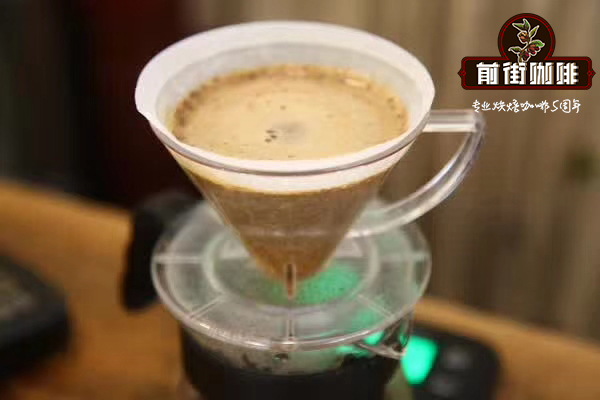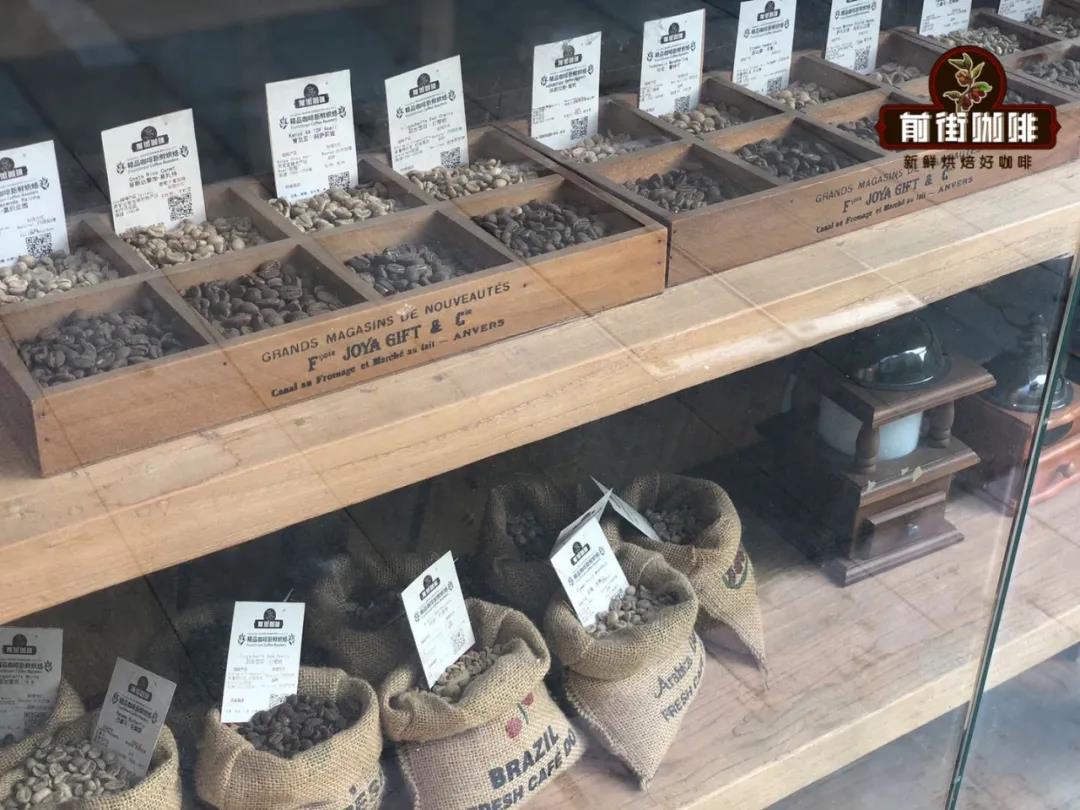What is the anaerobic fermentation method? what is the flavor of coffee by anaerobic fermentation?

Professional coffee knowledge exchange more coffee bean information please follow the coffee workshop (Wechat official account cafe_style)
Anaerobic fermentation process-- anaerobic fermentation treatment
Anaerobic fermentation, also known as carbon dioxide impregnation, is a new method used in red wine treatment, in which grapes are put into carbon dioxide gas to make grapes anaerobic, so that even without yeasts, grapes can also convert their fructose into alcohol, resulting in a special aroma, and the resulting wine has soft aroma and rich taste.
The coffee beans used by Sasa Sestic himself in WBC in 2015 are Rume Sudan, a species of Remy Sudan from Columbia-Cloud Manor (Las Nubes). According to his own account, the anaerobic fermentation treatment of this coffee bean is mainly to put the ripe coffee fruit in a sealed metal container (stainless steel bucket) to inject carbon dioxide and discharge oxygen, so it can be fermented and decomposed in an oxygen-free environment. and the fermentation process of PH value, gas composition, humidity, temperature, and even the type and number of bacteria involved in fermentation and other factors can be effectively controlled. Develop a better sweetness and a more balanced flavor.
However, at present, each treatment plant and all kinds of so-called anaerobic fermentation of raw beans are actually different, after all, this kind of treatment is still in the stage of development, so there is no standard and absolute version. Most of what we have heard so far is mainly based on the treatment of Sasa coffee beans at that time, or modified with this version, such as the recent emergence of experimental treatment methods such as anaerobic solarization, anaerobic washing and double anaerobic treatment, which is also very much expected.
Note: double anaerobic fermentation, as the name implies, is divided into two stages of anaerobic fermentation, but the fermentation time of each stage is different, resulting in different flavor.
Characteristics of anaerobic fermentation treatment
? The coffee fruit is placed in a stainless steel container (which will not absorb the previous coffee bean flavor) to make the flavor cleaner.
? Fermentation in a closed environment, various factors are easier to control, each treatment of coffee beans tend to be more consistent, and the aromatic substances are not easy to volatilize.
? Fermentation in an oxygen-free environment, the flavor is more round, easy to have cheese, cream aroma.
? The coffee bean flavor using this method usually has a fuller mellow thickness and wine aroma.
Anaerobic fermentation is not a new term in fermented food. Anaerobic bacteria are involved in the fermentation process of kimchi and wine. Now that we know that the post-processing of coffee beans is a fermentation process, the rest is the principle of fermentation.
Traditional sun exposure, water washing and honey treatment are mostly exposed to an open environment, so the existing bacteria that interact with them are usually oxygen-loving bacteria, such as photosynthetic bacteria and yeasts (yeast is facultative or oxygen-free). Anaerobic fermentation naturally uses the operating mechanism of anaerobic bacteria, such as lactic acid bacteria, filamentous bacteria and yeasts.
To produce anaerobic fermentation is not to throw any bacteria to the coffee beans, but to create an environment for the coffee beans to ferment, so it is usually necessary
1. Closed enclosed space: if you don't need to borrow other flavors, you should use easy-to-clean storage space such as white iron or stainless steel, but white iron is too expensive. (I don't think I can use a gasoline can.)
two。 Control the temperature and grasp the right time
3. Enough high-quality coffee beans (with a certain sweetness)
As for the need for peeling, dry treatment or wet treatment, this is the trade secret of the landowners, and there is no unified standard.
It is also logically reasonable, because a large part of the role of anaerobic fermentation falls on microbial species, and lactic acid bacteria convert glucose into the sweet and sour feeling of lactic acid under the action of no oxygen.
The chemical formula for the reaction of lactic acid bacteria with sugar is as follows:
C6H12O6 (glucose etc.) + 2 ADP+2 phosphate → 2 lactic acid (lactic acid) + 2 ATP
However, in an anaerobic environment, yeast undergoes anaerobic fermentation to convert glucose into alcohol (ethanol):
C6H12O6 → 2C2H5OH (ethanol) + 2CO2+2ATP
Alcohol is then converted into esters with other organic acids (such as lactic acid mentioned earlier), which is an important source of flavor for coffee fruits. So the anaerobic fermented coffee bean alcohol is thicker and has a wine-like mellow feeling, but the sweetness or fruit flavor is better than honey treatment.
Some handlers will keep the coffee beans from the pulp for anaerobic treatment, but the risk is that the yeast will convert glucose into alcohol, there is too much pulp in the glucose content must be very high, if there is not enough organic acid can not be fully converted into alcohol, there will be too strong fermented wine flavor, too much wine taste is terrible.
The above is our understanding of anaerobic fermentation. Properly controlled anaerobic fermentation can bring a slightly sweet and sour feeling and a beautiful alcohol thickness, but each manor needs to be studied for many years in order to find the best balance, and there will be more interesting ways to deal with it in the future. I believe it is also the direction that Yunnan coffee can strive for.
Important Notice :
前街咖啡 FrontStreet Coffee has moved to new addredd:
FrontStreet Coffee Address: 315,Donghua East Road,GuangZhou
Tel:020 38364473
- Prev

Litchi orchid coffee treatment litchi orchid coffee bean flavor
Professional coffee knowledge exchange more coffee bean information please follow the coffee workshop (Wechat official account cafe_style) this is a recently popular brand new Honduran brandy oak barrel fermented beans, this treatment is the freshly picked coffee fruits are first washed, and then put into brandy oak barrels low temperature fermentation for 30-40 days (the temperature is about 15-20 ℃)
- Next

The difference between the steps of anaerobic solarization and anaerobic washing process for the treatment of coffee beans
For more information on coffee beans, please follow the coffee workshop (official Wechat account cafe_style). Anaerobic solarization (Anaerobic) fermentation is a very popular post-processing method in recent years. Coffee fruit is usually placed in an airtight container or in a washing tank.
Related
- Beginners will see the "Coffee pull flower" guide!
- What is the difference between ice blog purified milk and ordinary milk coffee?
- Why is the Philippines the largest producer of crops in Liberia?
- For coffee extraction, should the fine powder be retained?
- How does extracted espresso fill pressed powder? How much strength does it take to press the powder?
- How to make jasmine cold extract coffee? Is the jasmine + latte good?
- Will this little toy really make the coffee taste better? How does Lily Drip affect coffee extraction?
- Will the action of slapping the filter cup also affect coffee extraction?
- What's the difference between powder-to-water ratio and powder-to-liquid ratio?
- What is the Ethiopian local species? What does it have to do with Heirloom native species?

